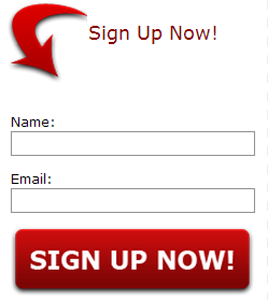For years I have asked for a visitors name with my newsletter forms however when I relaunched this blog I questioned whether this was necessary. This may seem like a trivial issue however it will determine whether my newsletter list is built up with people’s names or not.
I will be using Aweber to deliver blog posts every week and announcements about products I am releasing; it will play a big part in the success, or lack of success, of this blog. As such, it was something I gave a lot of consideration to when customising the current blog design. Surprisingly, there are few discussions about this issue online (until now!).
Do you really need to know the name of a subscriber? Is it important?
Personalising Newsletters
The whole point of asking for someone’s name is to make an email more personal. Many marketers have suggested that using the subscribers name will improve response rates. I’m not so sure it does. People aren’t stupid. Most will realise that the email has been sent to thousands of people by the way it’s been written.
Some people also enter their surname or a fake name when signing up to a newsletter so if the name field is used the email can seem more like spam (remember: despite people signing up to your newsletter, many may view your emails as that). Jive Jeff spoke about this issue on Aweber in the article ‘Pros and Cons of Email Personalization‘:
If people are not consistently entering names, or entering something other than a true name like “Test,” then it could have the adverse effect of proper personalization.
It’s the kind of thing that could cause someone to unsubscribe. It may be safer to just directly to a person without using their name. David Risley talked about this recently in his post ‘This Time, Its Personal…‘:
Why do that? Just to increase the open rate a little bit?
If you get a little bit higher open rate using a tactic like that, it seems to me that short-term bump isn’t worth the long term damage to your trust factor.
David actually uses the name field in his newsletter form despite writing this article however it isn’t clear whether he is personalising his emails with the name field.
I’ve become so accustomed to reading newsletter emails that I barely even notice whether my name is not is used. It certainly doesn’t influence whether I respond to the email or not because it’s clear from the start that it’s a marketing email so whether it’s personalised or not is irrelevant. I see no difference between someone using “Hey Kevin”, “Hey Guys” or removing the greeting at the start of the email altogether.
Sign Up Rates
The main reason I wanted to remove the name field was from a sign up point of view. I’ve seen thousands of blogs that only ask for a users email address and I don’t think it has hurt them. I’ve not read any surveys which compare sign up rates to forms which include the name field but I strongly believe that only asking for a visitors email address will improve your sign up rate. The quicker a form is to complete, the more likely it is than someone will sign up for it.
With only the email field in the newsletter, it becomes easier to integrate newsletter sign up forms into your design too. You can see how I’ve done this in the header, sidebar and underneath articles.
The downside to removing the name field is that you won’t know the name of the subscriber. I don’t think this is an issue. What do you really need the name of the subscriber for? I can’t think of any worthwhile reasons other than personalising an email. Once you have converted a subscriber to a customer they are going to give you their name anyway (I think including the name in a sales email is a different issue altogether).
In the end I decided that not asking for the name was easier for visitors and would therefore increase sign up rates. I’ve got no hard evidence of whether this is true and whilst I can see both sides of the argument, personalising emails is not something that I think will hurt my email list.
To read both sides of the argument, I recommend reading the Aweber articles ‘Pros and Cons of Email Personalization‘ and ‘Should Your Sign Up Form Ask For More Than Name and Email?‘.
What fields do you include in your newsletter form?
Kevin

